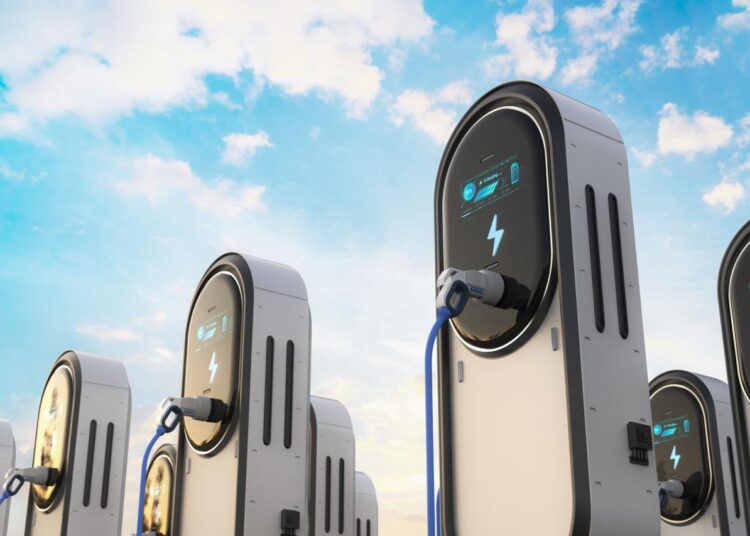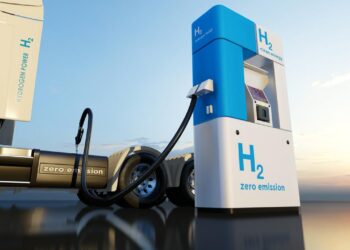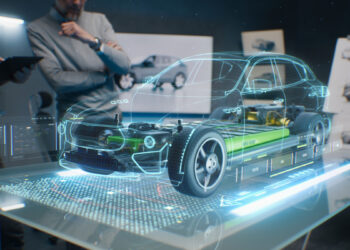Why Battery Innovation is Paramount for EVs
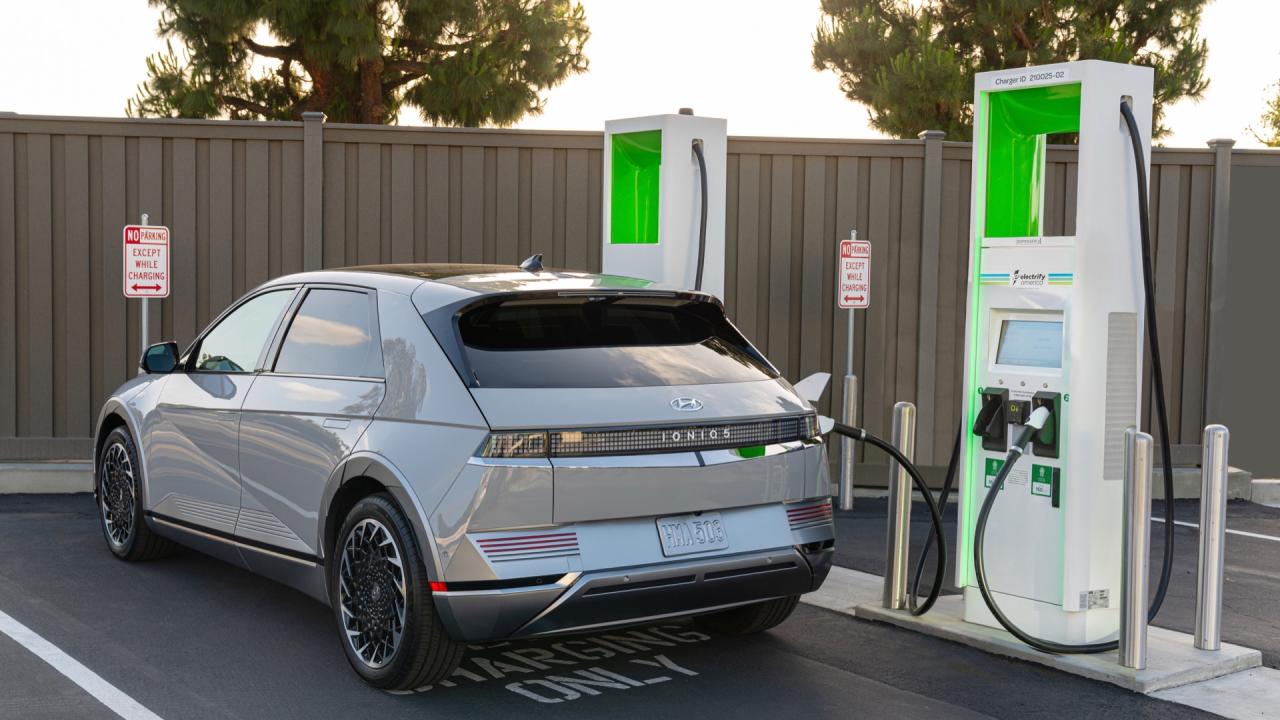
The battery is arguably the single most critical component in an electric vehicle. Its characteristics directly influence nearly every aspect of the EV experience and its commercial viability.
A. Range and Energy Density
One of the primary concerns for potential EV buyers has always been “range anxiety” – the fear of running out of power before reaching a charging station.
- Higher Energy Density: Battery breakthroughs primarily focus on packing more energy into a smaller, lighter package. This directly translates to longer driving ranges for EVs, making them suitable for longer commutes and intercity travel without frequent stops.
- Reduced Weight: Lighter batteries contribute to a lighter overall vehicle, which in turn improves efficiency, handling, and performance.
- Space Optimization: Smaller battery packs free up interior space for passengers and cargo, or allow for more flexible vehicle designs.
- Increased Practicality: As ranges extend, EVs become a viable replacement for gasoline cars for a wider range of drivers and use cases.
Achieving greater range without increasing battery size or weight is a relentless pursuit, and breakthroughs in energy density are key to achieving mass market acceptance.
B. Charging Speed and Infrastructure
The time it takes to recharge an EV is a significant factor in consumer convenience. Faster charging is as crucial as longer range.
- Rapid Charging Capabilities: New battery chemistries and architectures are designed to accept higher power inputs without degrading, significantly reducing charging times. This is especially important for public fast-charging stations.
- Lower Resistance: Batteries with lower internal resistance can charge faster and generate less heat, which is vital for battery longevity.
- Reduced Waiting Times: Faster charging makes long-distance travel in an EV more comparable to refueling a gasoline car, alleviating a major pain point.
- Infrastructure Efficiency: Faster charging reduces the time a vehicle occupies a charging stall, making better use of existing and future charging infrastructure.
- Thermal Management: Innovative battery designs often include advanced thermal management systems to dissipate heat efficiently during rapid charging, protecting the battery.
Breakthroughs in charging speed are essential for consumer adoption and maximizing the utility of existing charging networks.
C. Cost Reduction and Affordability
The upfront cost of an EV, largely driven by the battery, has historically been a barrier for many consumers.
- Economies of Scale: As production ramps up globally, the cost per kilowatt-hour (kWh) of batteries has consistently dropped.
- Material Innovation: Research into cheaper, more abundant raw materials for cathodes and anodes (e.g., sodium, alternative lithium compounds) aims to reduce reliance on expensive or geopolitically sensitive materials.
- Improved Manufacturing Processes: More efficient and automated battery manufacturing techniques are cutting down production costs.
- Simplified Battery Packs: Streamlined battery pack designs, such as cell-to-pack or cell-to-chassis configurations, reduce assembly complexity and cost.
- Increased Accessibility: Lower battery costs directly translate to more affordable EV models across various segments, making electric mobility accessible to a broader consumer base.
- Reduced Government Subsidies: As costs fall, the industry becomes less reliant on government incentives, making the EV market more self-sustaining.
Cost reduction is perhaps the most critical factor for achieving true mass-market penetration for EVs.
D. Durability and Lifespan
Consumers need confidence that an EV battery will last for the entire lifespan of the vehicle, similar to a traditional engine.
- Cycle Life: Advances in battery chemistry and cell design are improving the number of charge-discharge cycles a battery can endure before significant degradation.
- Temperature Resilience: New chemistries and thermal management systems are making batteries more robust to extreme temperatures, both hot and cold, which can affect performance and longevity.
- Safety Improvements: Research focuses on making batteries inherently safer, reducing the risk of thermal runaway or fire, which is crucial for public perception and regulatory approval.
- Warranty Periods: Manufacturers are offering longer warranties on EV batteries (typically 8-10 years or 100,000-150,000 miles), reflecting increased confidence in their longevity.
- Second-Life Applications: Even after their useful life in a vehicle, batteries can be repurposed for stationary energy storage, extending their value and environmental benefit.
Ensuring battery longevity and safety is fundamental to consumer trust and sustainable EV growth.
Major Breakthrough Areas in EV Battery Technology
The current wave of innovation is multifaceted, targeting improvements across various aspects of battery chemistry and architecture.
A. Solid-State Batteries
This is arguably the most anticipated “holy grail” of battery technology. Unlike current lithium-ion batteries that use liquid electrolytes, solid-state batteries (SSBs) replace this with a solid material.
- Higher Energy Density: SSBs have the potential to store significantly more energy in the same volume, leading to much longer ranges or smaller, lighter battery packs.
- Improved Safety: Eliminating flammable liquid electrolytes drastically reduces the risk of thermal runaway and fire.
- Faster Charging: Solid electrolytes can potentially handle much higher charging rates without forming dendrites (crystalline structures that can short-circuit the battery).
- Longer Lifespan: SSBs are expected to have a longer cycle life due to greater stability.
- Wider Operating Temperatures: Better performance across a broader range of temperatures.
- Simplified Packaging: The inherent stability could lead to simpler, more compact battery pack designs.
While still largely in the research and early prototyping phases for automotive use, numerous companies and research institutions are making rapid progress towards commercialization, with some automakers aiming for deployment by the late 2020s.
B. Sodium-Ion Batteries (Na-ion)
As an alternative to lithium-ion, sodium-ion batteries are gaining traction due to the abundance and low cost of sodium.
- Abundant Raw Materials: Sodium is significantly more abundant and widely distributed than lithium, reducing reliance on specific regions and potentially lowering costs.
- Lower Cost: The raw materials for Na-ion batteries are much cheaper than those for lithium-ion.
- Improved Safety at Low Temperatures: Na-ion batteries can perform better in colder climates compared to some lithium-ion chemistries.
- Non-Flammable Electrolytes: Some Na-ion designs use non-flammable electrolytes, enhancing safety.
- No Cobalt/Nickel: Many Na-ion chemistries avoid the use of cobalt and nickel, which are expensive and have ethical sourcing concerns.
- Scalability: The vast availability of sodium makes large-scale production more feasible.
While currently having lower energy density than leading lithium-ion batteries, ongoing research is rapidly improving their performance, making them a strong candidate for entry-level EVs, stationary storage, and two-wheelers.
C. Silicon Anodes
Traditional lithium-ion batteries use graphite as the anode material. Replacing or supplementing graphite with silicon can dramatically increase energy density.
- Higher Energy Density: Silicon can store significantly more lithium ions than graphite, leading to higher capacity and longer range.
- Faster Charging Potential: Silicon has properties that could enable faster charging rates.
- Material Abundance: Silicon is the second most abundant element in the Earth’s crust, making it a sustainable choice.
The main challenge with silicon anodes has been their tendency to expand and contract significantly during charging and discharging, leading to mechanical degradation and reduced lifespan. However, advanced nanostructuring and composite materials are overcoming these issues, bringing silicon anodes closer to widespread commercialization in high-performance EVs.
D. Lithium Iron Phosphate (LFP) Batteries
LFP batteries have been around for a while but are experiencing a resurgence due to new advancements and strategic advantages.
- Improved Safety: LFPs are inherently more thermally stable and less prone to thermal runaway compared to NMC (Nickel Manganese Cobalt) or NCA (Nickel Cobalt Aluminum) chemistries.
- Lower Cost: They do not use expensive and contentious materials like nickel and cobalt, making them significantly cheaper to produce.
- Longer Cycle Life: LFPs generally offer a very long cycle life, meaning they can be charged and discharged many more times before significant degradation.
- Tolerance to 100% Charging: Unlike other lithium-ion chemistries, LFPs can often be regularly charged to 100% without significant long-term degradation, making daily use simpler.
- Availability: Materials are more readily available, reducing supply chain risks.
Recent breakthroughs in LFP technology, such as “blade batteries” or “cell-to-pack” designs, have improved their energy density, making them suitable for longer-range applications, not just entry-level EVs. They are increasingly being adopted by major automakers for various models.
E. Advanced Cathode and Anode Chemistries (Beyond LFP/NMC/NCA)
Researchers are constantly exploring new combinations of materials to optimize battery performance.
- High-Nickel Cathodes: Pushing the nickel content in NMC/NCA batteries even higher can increase energy density, though it often comes with trade-offs in stability and cost.
- Manganese-Rich Cathodes: Exploring the use of more abundant manganese in cathode materials to reduce reliance on nickel and cobalt while maintaining performance.
- Cobalt-Free Chemistries: Intensive research into completely eliminating cobalt from battery cathodes due to its high cost and ethical sourcing concerns.
- Lithium-Sulfur Batteries: A promising long-term technology with very high theoretical energy density, though challenges with cycle life and stability remain.
- Lithium-Metal Batteries: Another future technology with very high energy density potential, but dendrite formation issues need to be resolved.
These ongoing material science innovations promise a continuous evolution of battery performance.
The Broader Impact of Battery Breakthroughs
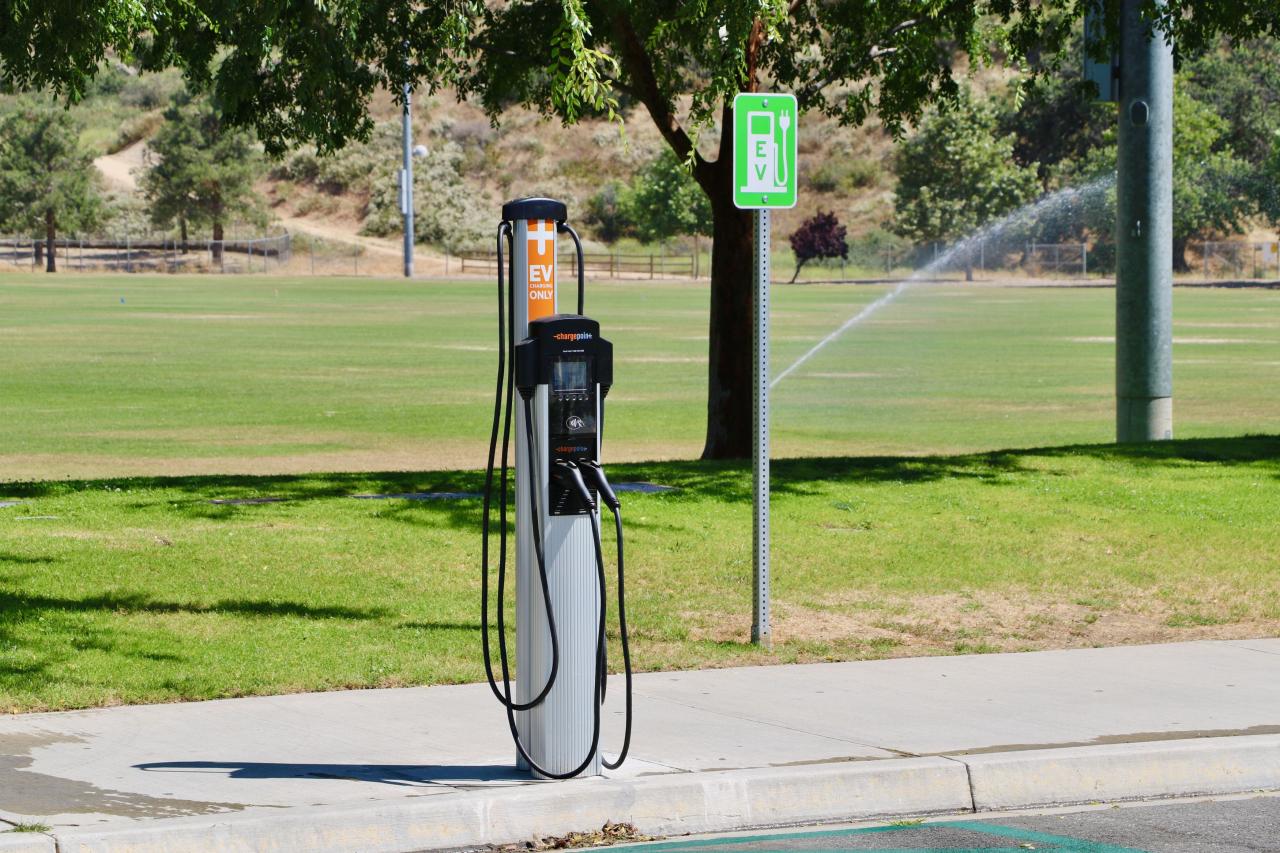
The ripple effects of these innovations extend far beyond just the vehicles themselves, influencing energy grids, raw material markets, and global economies.
A. Energy Grid Integration and Stability
More efficient and cost-effective batteries will play a crucial role in grid modernization.
- Renewable Energy Storage: EV batteries can store intermittent renewable energy (solar, wind), making the grid more stable and reliable.
- Vehicle-to-Grid (V2G) Capability: As batteries become more robust, EVs can feed power back to the grid during peak demand, acting as distributed energy resources.
- Peak Shaving: Charging EVs during off-peak hours and discharging during peak hours helps balance the grid and reduce strain.
- Home Energy Storage: Second-life EV batteries can be repurposed for residential and commercial energy storage, further democratizing energy access.
The synergy between EV batteries and the energy grid is a cornerstone of a sustainable energy future.
B. Raw Material Markets and Supply Chain Resilience
Battery breakthroughs are fundamentally altering the demand and sourcing for critical minerals.
- Reduced Cobalt Dependence: The shift to LFP and high-nickel chemistries with lower or no cobalt content alleviates ethical sourcing concerns and reduces market volatility.
- Diversification of Materials: Research into sodium, manganese, and other abundant materials diversifies the reliance away from a few key minerals.
- Recycling and Circular Economy: As more batteries reach end-of-life, advanced recycling techniques are becoming crucial for recovering valuable materials, creating a closed-loop system and reducing the need for virgin mining.
- Regionalized Supply Chains: Governments and manufacturers are investing in localized mining, refining, and battery production to reduce geopolitical risks and increase supply chain resilience.
- Ethical Sourcing: Greater scrutiny and efforts towards responsible and ethical sourcing of battery materials.
The drive for sustainable and resilient supply chains is a major force in battery innovation.
C. New Business Models and Economic Opportunities
The battery revolution is spawning entirely new industries and services.
- Battery-as-a-Service (BaaS): Models where consumers lease batteries separately from the vehicle, reducing upfront EV cost and offering upgrade flexibility.
- Battery Swapping Stations: Services that allow rapid battery exchange, eliminating charging wait times for some applications.
- Recycling Companies: Growth of specialized companies focused on efficient and safe battery recycling.
- Energy Management Software: Development of sophisticated software to optimize battery charging, discharging, and grid interaction.
- Second-Life Battery Repurposing: Companies specializing in finding new applications for used EV batteries.
- Mining and Material Processing: Increased investment and innovation in these sectors to meet growing demand.
The battery is not just a component; it’s an economic engine.
D. Policy and Regulatory Influence
Governments are heavily influencing battery innovation through various mechanisms.
- Research Funding: Direct grants and funding for battery research and development.
- Subsidies and Incentives: Tax credits and rebates for EV purchases, which indirectly support battery technology.
- Emissions Regulations: Stringent emissions standards that push automakers towards electrification and better batteries.
- Material Sourcing Policies: Regulations promoting ethical and sustainable sourcing of battery raw materials.
- Recycling Mandates: Policies requiring battery recycling and promoting a circular economy.
- Charging Infrastructure Investment: Government support for building out charging networks.
Policy plays a critical role in accelerating battery innovation and deployment.
The Continuous Evolution of Batteries
While current breakthroughs are significant, the pace of battery innovation is expected to accelerate further.
A. Continued Energy Density Improvements
The pursuit of “more miles per charge” will continue, driven by new chemistries and packaging techniques. Solid-state batteries, lithium-sulfur, and lithium-air batteries are long-term goals that could push energy density far beyond current capabilities.
B. Ultra-Fast Charging
Future batteries aim for charging times comparable to gasoline refueling, perhaps 5-10 minutes for a substantial range, making long-distance EV travel truly seamless. This requires not only battery innovation but also advancements in charging infrastructure.
C. Extreme Durability and Lifespan
Batteries designed to last for hundreds of thousands of miles or even a million miles, exceeding the lifespan of the vehicle itself, making them ideal for second-life applications or subsequent vehicle reuse.
D. Cost Parity with ICE Powertrains
The goal is to reach a point where the battery pack cost is so low that the total manufacturing cost of an EV is comparable to, or even cheaper than, an equivalent internal combustion engine vehicle, without relying on subsidies.
E. Enhanced Safety Features
Continuous research into inherently safer battery chemistries and advanced battery management systems (BMS) that can detect and prevent thermal events before they escalate.
F. Full Circularity and Sustainability
Developing closed-loop systems for battery materials, ensuring that nearly all components can be recovered and reused, minimizing environmental impact and resource depletion. This includes better dismantling techniques, more efficient recycling processes, and designing batteries for easier end-of-life processing.
Conclusion
The rapid succession of EV battery breakthroughs is not just improving electric vehicles; it’s fundamentally reshaping the entire automotive and energy landscapes. From the increased range and faster charging of today’s models to the transformative promise of solid-state and sodium-ion technologies, innovation in battery chemistry and manufacturing is dismantling the barriers to widespread EV adoption. These advancements are driving down costs, enhancing safety, extending lifespan, and most importantly, empowering a cleaner, more efficient, and more sustainable future of transportation. The battery, once a limitation, has become the spearhead of the electric revolution, signaling that the era of clean, quiet, and powerful electric mobility is not just on the horizon; it’s rapidly becoming our present reality.

